West Kiang, The Gambia
Our project partner in The Gambia is the MRC Unit Gambia @ LSHTM and especially their remote fieldsite MRCG Keneba based in the rural West Kiang region. There has been a long-standing partnership between MRCG and the local communities spanning over 7 decades of health research with a particular emphasis on nutrition and how this affects reproduction and child survival, growth and welfare. The population of ~16,000 people in 36 villages is overwhelmingly Islamic. Traditional attitudes are rapidly evolving as more children (including girls) attend school and stay in school for longer. Regular short and longer-term migration to urban areas and overseas is also changing attitudes at a rapid pace. See here for more information on the West Kiang cohort.
Our data collection in Kiang West district in The Gambia – setting the team
Our data collection started October 2021. Researcher Laure Spake arrived at the Keneba Clinic in the Kiang West district in The Gambia, and worked to build a great team of researchers. Jainaba Badjie is the Field Co-ordinator in The Gambia, Lamin Sanyang is the Field Supervisor, and Matarr Ndow the Senior Field Assistant. Other team members include Tumbulu Drammeh, Alieu Bah, Jonsaba Manka, Abubacar Ceesay, Aminata Ceesay, Buba Ceesay, and Bintou Jarjou.
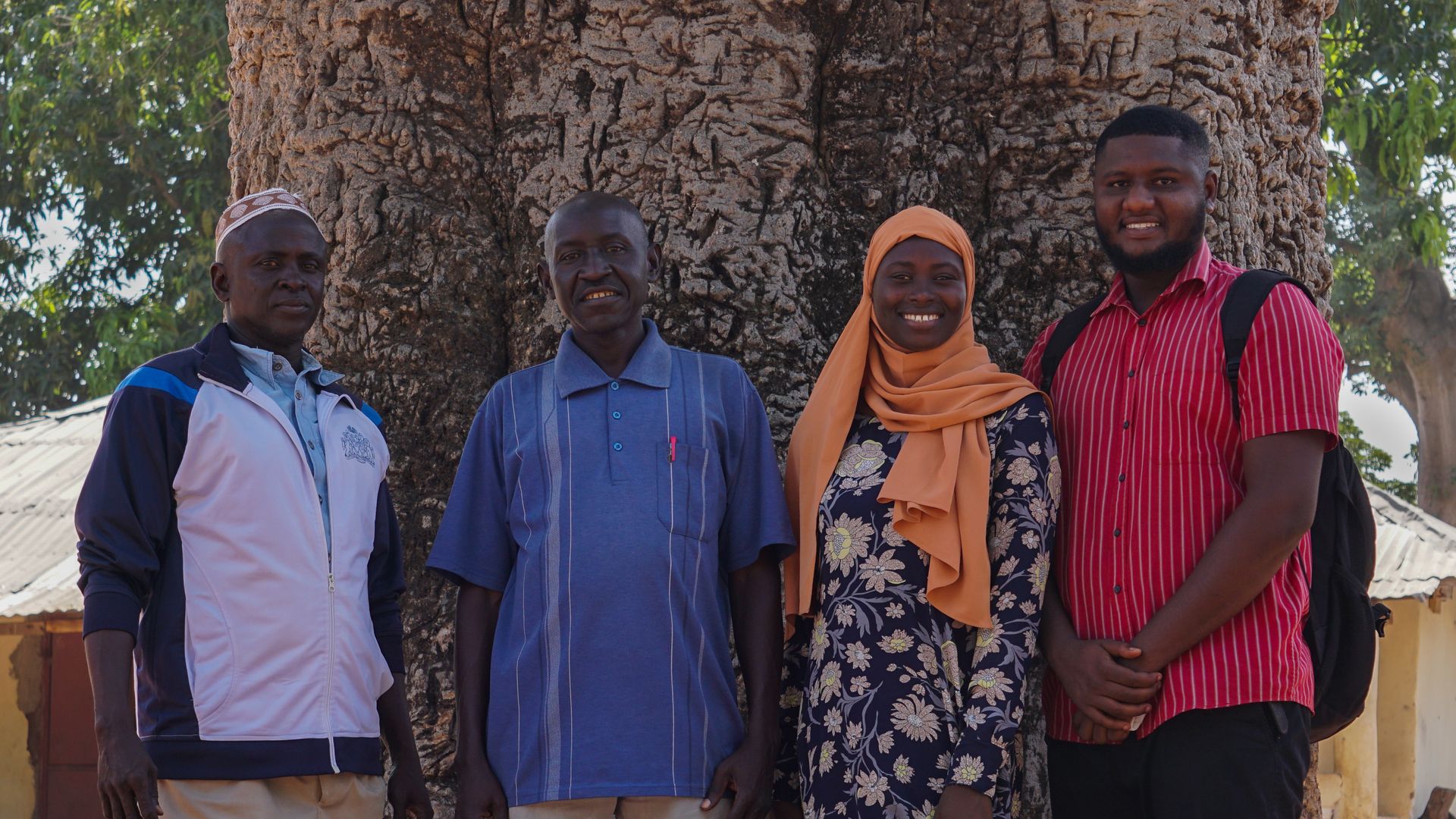
From left: Lamin Sanyang (field supervisor), Tumbulu Drammeh (interviewer), Jainaba Badjie (field coordinator), and Alieu Bah (interviewer).
Preliminary focus groups: Informing the survey
Our project has two main components, namely guided focus group discussions (FGDs) and quantitative data collected via questionnaires.
The purpose of these initial guided focus group discussions is to understand local ideas about social support, care provided to children, and the influence of religious practice on cooperative behaviour in the community. We held focus group discussions in two different villages in the region. In each village, we held two group discussions, one for men and one for women. Each focus group included between 8 and 10 participants.
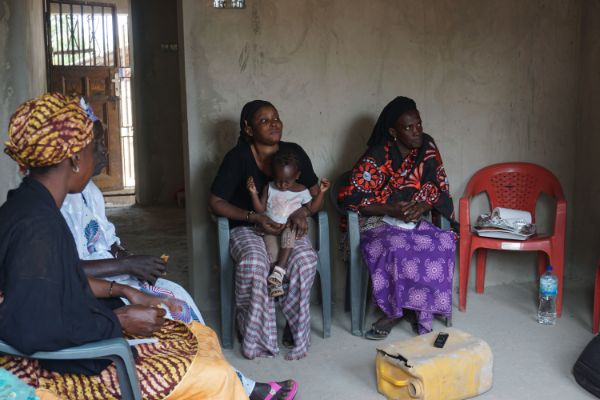
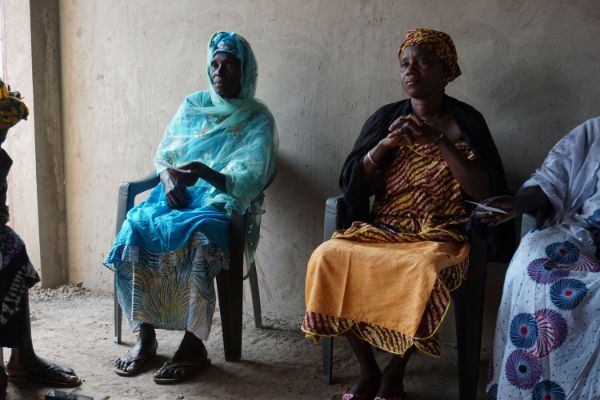
Participants from one of the focus group discussion that was held.
The ethnographic information that emerged from these focus group discussions was then incorporated into a preliminary working copy of our survey. We then had the survey translated into Mandinka, and we piloted it with the field team and local information and afterwards finalized the survey instrument.
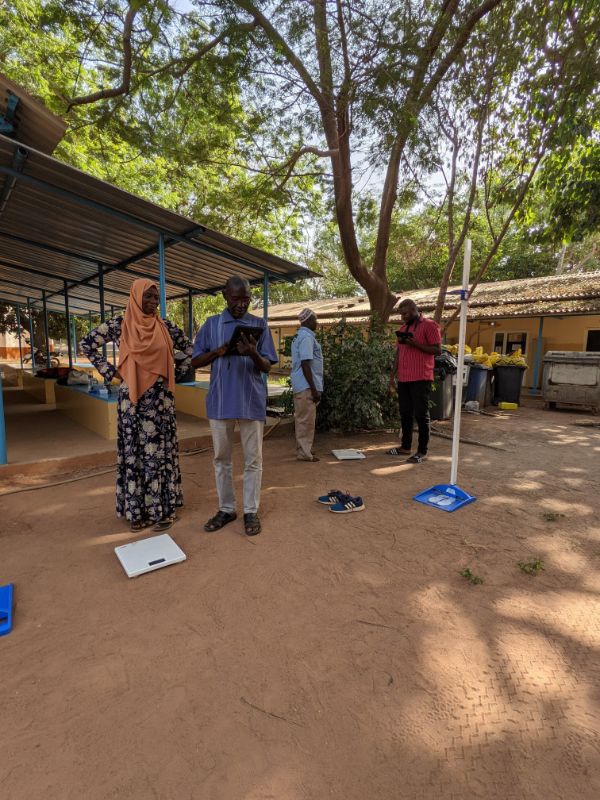
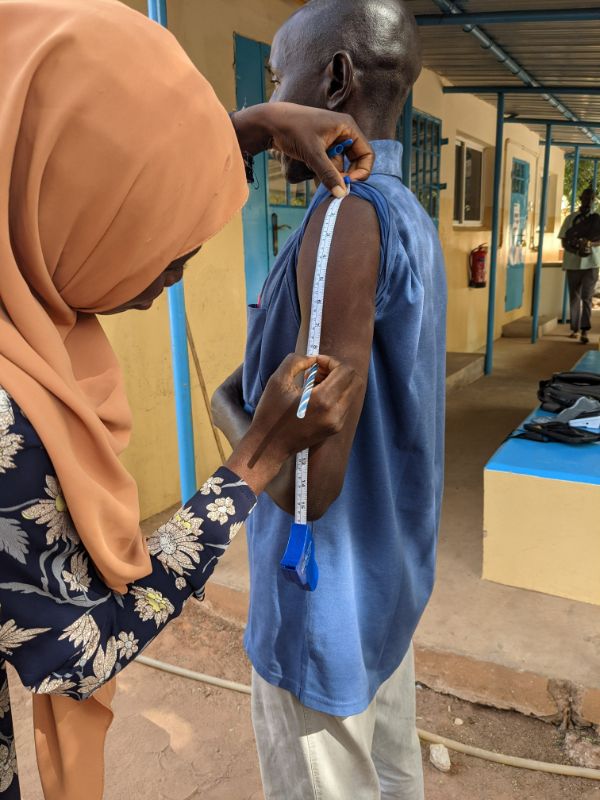
Tumbulu Drammeh and Jainaba Badjie are testing the anthropometric kits.
Survey
Survey data were collected verbally in the local Mandinka language. Interviews took between 1.5 – 2 hours. Data were entered into tablets during the interview using a software called ODK (formerly called Open Data Kit), so that data afterwards easily were transferred to our central data base. The interviewers also collected anthropometric data for each person being interviewed as well as for focal children. Specifically, we collected height, weight, blood pressure, and the circumference of the upper arm.
Our team interviewed 700 women and 300 men, and collected detailed information for 1,360 children across 23 villages.

This map shows where the villages are located.
A day in the field for Alieu Bah as interviewer
Alieu Bah would start the morning in the field team office at the MRC Keneba campus and pick up a tablet and the anthropometric equipment. He meets with Jainaba Badjie and Matarr Ndow (Field co-ordinator and Senior Field Assistant) and the other interviewers to get the assigned field forms for the scheduled participants for that day. Then he travels to the chosen village together with the rest of the team. Once at the village, he finds the assigned household, often assisted by Matarr Ndow who helps to locate the specific household, and the interview begins. Sometimes, the interviewers will meet the participants at their gardens if that is more convenient for them. Prior to these interviews representatives from the team, and especially our Field Supervisor Lamin Sanyang, have already visited the village, presented kola nuts, described the project to the village chief and the community, and received permission to do research in the village.
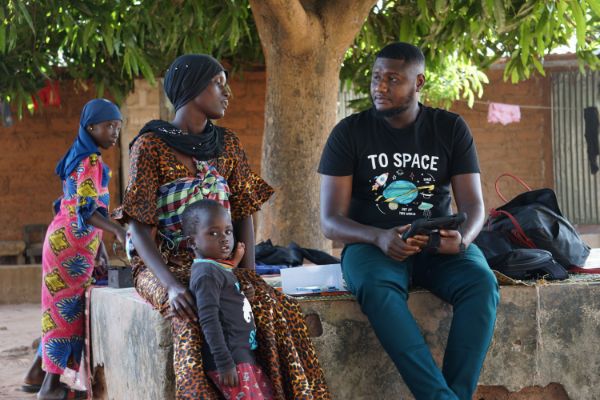
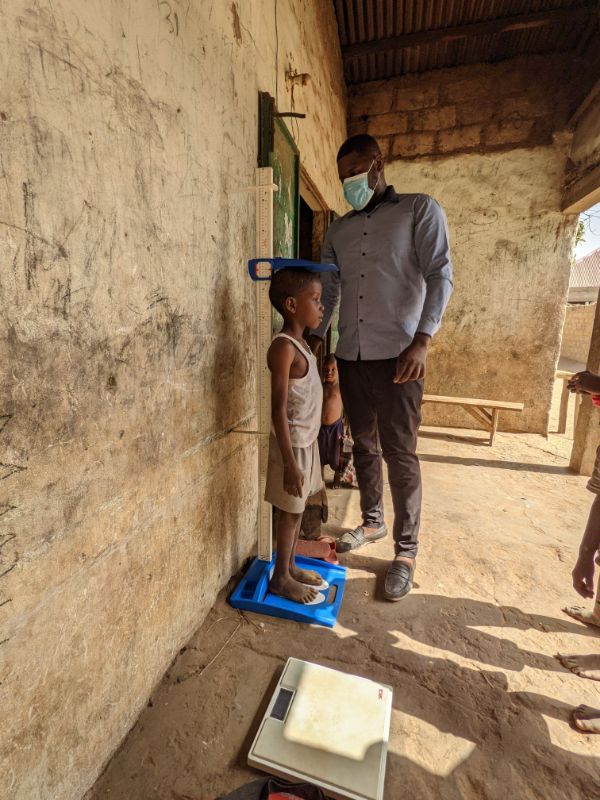
In the first photo, Alieu Bah interviews a participant with her children. Second photo shows Alieu Bah measuring a child’s height outside the village shop.
At 10am everyone will take a break for breakfast and at 2pm it is time for prayers and for lunch. Quite often, Alieu Bah and the other Field Assistants are invited for breakfast or lunch with the participants. Interviews will end around 4pm in time to return to the office to return materials and equipment, prepare for the next day, and then finish in time for prayers at 5pm.

The team waits for transportation back to MRC after a day of interviews in Jali. From left to right: Jainaba Badjie, Abubacarr Ceesay, Aminata Ceesay, Jonsaba Manka, Bintou Jarjou, Alieu Bah.
What happens next
We have just finished data collection in Kiang West and are currently analyzing the data. In October 2022, Laure Spake and John Shaver presented preliminary results to the 23 villages that participated in the study, and received feedback from community members, which will help us to interpret our data.

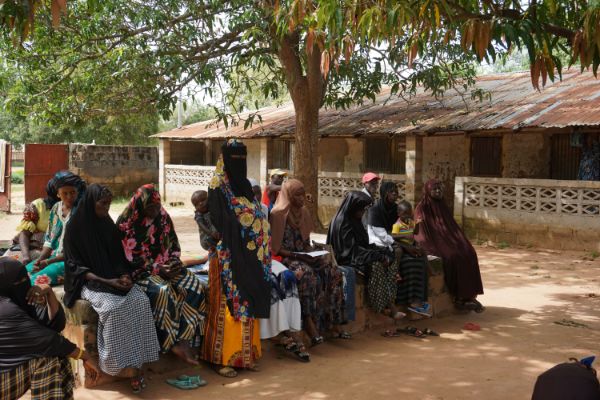
Laure Spake and the rest of the research team are presenting preliminary results for participants.
